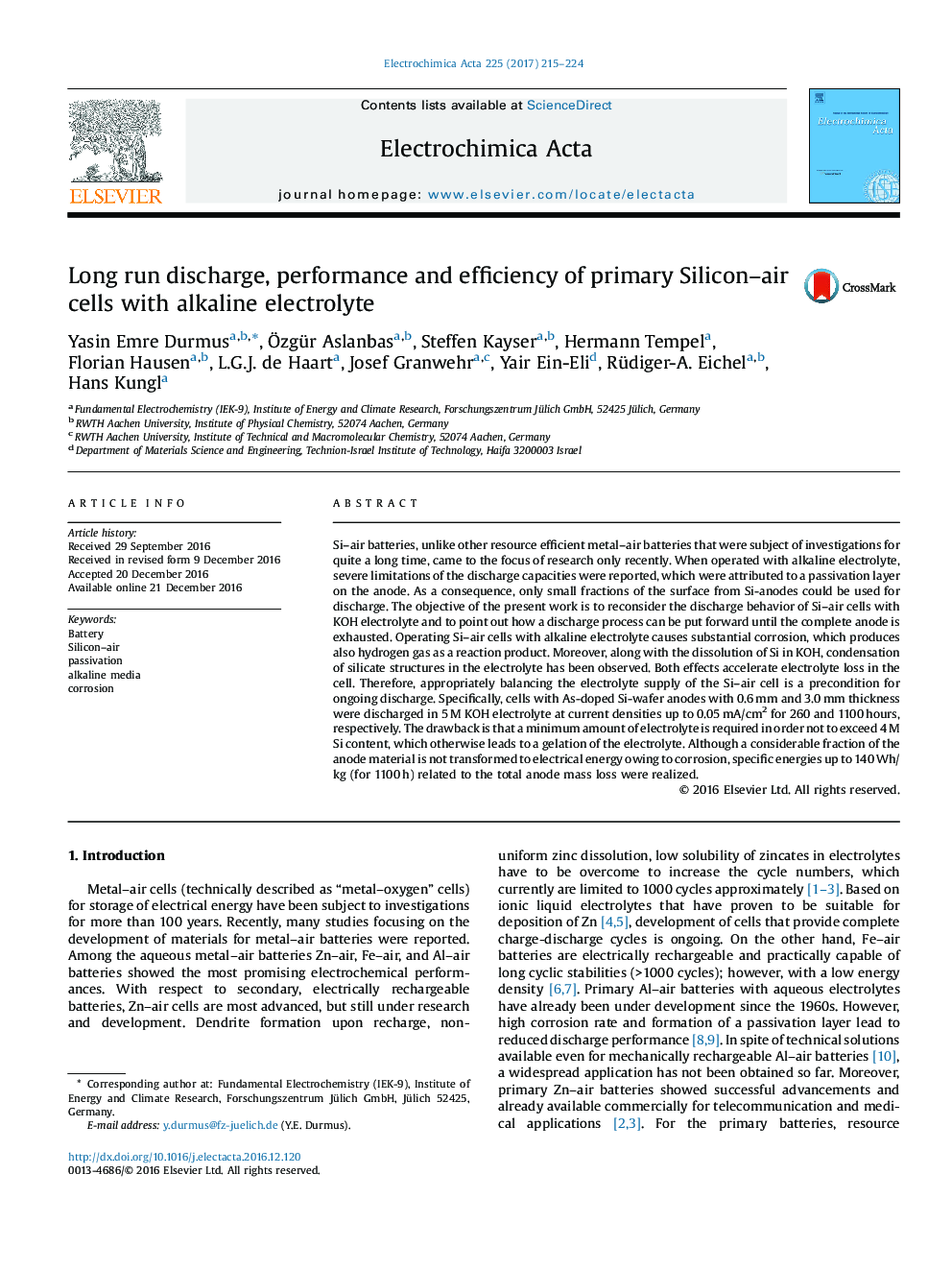| Article ID | Journal | Published Year | Pages | File Type |
|---|---|---|---|---|
| 4767363 | Electrochimica Acta | 2017 | 10 Pages |
Abstract
Si-air batteries, unlike other resource efficient metal-air batteries that were subject of investigations for quite a long time, came to the focus of research only recently. When operated with alkaline electrolyte, severe limitations of the discharge capacities were reported, which were attributed to a passivation layer on the anode. As a consequence, only small fractions of the surface from Si-anodes could be used for discharge. The objective of the present work is to reconsider the discharge behavior of Si-air cells with KOH electrolyte and to point out how a discharge process can be put forward until the complete anode is exhausted. Operating Si-air cells with alkaline electrolyte causes substantial corrosion, which produces also hydrogen gas as a reaction product. Moreover, along with the dissolution of Si in KOH, condensation of silicate structures in the electrolyte has been observed. Both effects accelerate electrolyte loss in the cell. Therefore, appropriately balancing the electrolyte supply of the Si-air cell is a precondition for ongoing discharge. Specifically, cells with As-doped Si-wafer anodes with 0.6Â mm and 3.0Â mm thickness were discharged in 5Â M KOH electrolyte at current densities up to 0.05Â mA/cm2 for 260 and 1100Â hours, respectively. The drawback is that a minimum amount of electrolyte is required in order not to exceed 4Â M Si content, which otherwise leads to a gelation of the electrolyte. Although a considerable fraction of the anode material is not transformed to electrical energy owing to corrosion, specific energies up to 140Â Wh/kg (for 1100Â h) related to the total anode mass loss were realized.
Related Topics
Physical Sciences and Engineering
Chemical Engineering
Chemical Engineering (General)
Authors
Yasin Emre Durmus, Ãzgür Aslanbas, Steffen Kayser, Hermann Tempel, Florian Hausen, L.G.J. de Haart, Josef Granwehr, Yair Ein-Eli, Rüdiger-A. Eichel, Hans Kungl,
